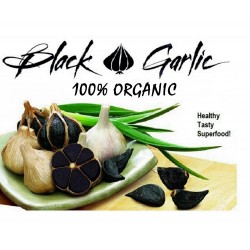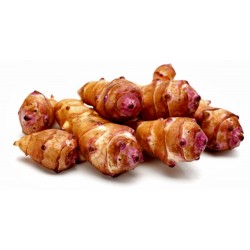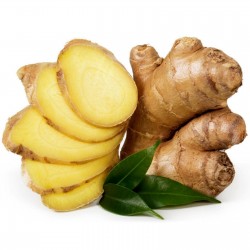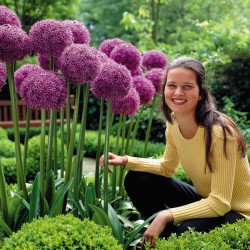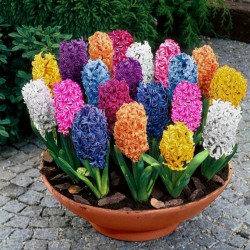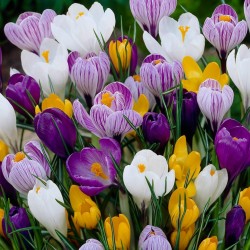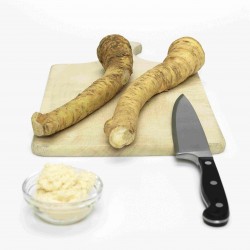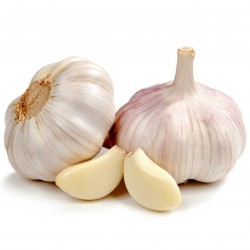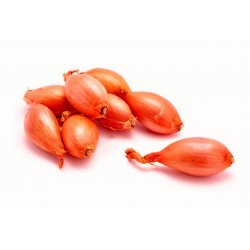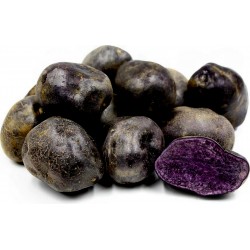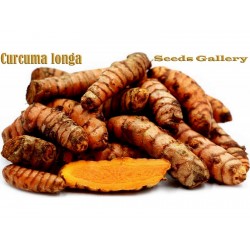.png)
Variety from Greece

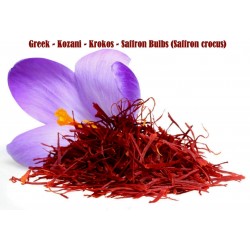
Saffron Bulbs (Crocus sativus)
Price
€3.75
SKU: MHS 105 B
Seeds Gallery Com,
5/
5
<meta http-equiv="Content-Type" content="text/html; charset=UTF-8" />
<h2><strong>Saffron Bulbs (Saffron crocus)</strong></h2>
<h2><span style="color: #ff0000;"><strong>Price for Package of 1 bulb.</strong></span></h2>
<p><span style="color: #000000; font-family: helvetica, arial, sans-serif;">Crocus sativus, commonly known as saffron crocus, or autumn crocus,[2] is a species of flowering plant of the Crocus genus in the Iridaceae family. It is best known for producing the spice saffron from the filaments that grow inside the flower. The term "autumn crocus" is also mistakenly used for flowers in the Colchicum species. However, crocuses have 3 stamens and 1 style, while colchicum have 6 stamens and 3 styles and are toxic.</span></p>
<p><span style="color: #000000; font-family: helvetica, arial, sans-serif;">This cormous autumn-flowering perennial plant species is unknown in the wild.[2] Human cultivation of saffron crocus and use of saffron have taken place for more than 3,500 years and spans different cultures, continents, and civilizations, see history of saffron. Crocus sativus is currently known to grow in the Mediterranean, East Asia, and Irano-Turanian Region.[4] Saffron may be the triploid form of a species found in Eastern Greece, Crocus cartwrightianus; it probably appeared first in Crete. An origin in Western or Central Asia, although often suspected, is not supported by botanical research.[5] Other sources suggest some genetic input from Crocus pallasii.</span></p>
<p><span style="color: #000000; font-family: helvetica, arial, sans-serif;"><strong>Morphology</strong></span></p>
<p><span style="color: #000000; font-family: helvetica, arial, sans-serif;">Crocus sativus has a corm, which holds leaves, bracts, bracteole, and the flowering stalk.[4] These are protected by the corm underground. C. sativus generally blooms with purple flowers in the autumn. The plant grows about 10 to 30 cm high.[7] C. sativus is a triploid with 24 chromosomes, which means it has three times the haploid number of chromosomes. This makes the plant sterile due to its inability to pair chromosomes during meiosis.</span></p>
<p><span style="color: #000000; font-family: helvetica, arial, sans-serif;"><strong>Cultivation</strong></span></p>
<p><span style="color: #000000; font-family: helvetica, arial, sans-serif;">Crocus sativus is unknown in the wild, and its ancestor is unknown. The species Crocus cartwrightianus is the most probable ancestor,[9][6] but C. thomassi and C. pallasii are still being considered as potential predecessors.[10] Manual vegetative multiplication is necessary to produce offspring for this species as the plant itself is a triploid that is self-incompatible and male sterile, therefore rendering it incapable of sexual reproduction. This inability to reproduce on its own supports the hypothesis that C. sativus is a mutant descending from C. carthwrightianus as a result of selective breeding.</span></p>
<p><span style="color: #000000; font-family: helvetica, arial, sans-serif;">Corms of Crocus sativus should be planted 4 inches apart and in a trough 4 inches deep. The flower grows best in areas of full sun in well-drained soil with moderate levels of organic content.[11] The corms will multiply after each year, and will last 3–5 years.</span></p>
<p><span style="color: #000000; font-family: helvetica, arial, sans-serif;"><strong>Use</strong></span></p>
<p><span style="color: #000000; font-family: helvetica, arial, sans-serif;">Saffron is considered to be the most valuable spice by weight. <strong>See spice</strong>. Depending on the size of harvested stigmas, 50,000–75,000 Crocus sativus plants are needed to produce about 1 pound of saffron;[13] each flower only produces three stigmas. Stigmas should be harvested mid-morning when the flowers are fully opened.[12] The saffron crocus (Crocus sativus) should not be confused with "meadow" saffron or autumn crocus (Colchicum autumnale) which is poisonous.</span></p>
<p><span style="color: #000000; font-family: helvetica, arial, sans-serif;"><strong>Spice</strong></span></p>
<p><span style="color: #000000; font-family: helvetica, arial, sans-serif;">Saffron (pronounced /ˈsæfrən/ or /ˈsæfrɒn/)[1] is a spice derived from the flower of Crocus sativus, commonly known as the "saffron crocus". The vivid crimson stigmas and styles, called threads, are collected and dried to be used mainly as a seasoning and colouring agent in food. Saffron, long among the world's most costly spices by weight,[2][3][4] was probably first cultivated in or near Greece.[5] C. sativus is probably a form of C. cartwrightianus, that emerged by human cultivators selectively breeding plants for unusually long stigmas in late Bronze Age Crete.[6] It slowly propagated throughout much of Eurasia and was later brought to parts of North Africa, North America, and Oceania.</span></p>
<p><span style="color: #000000; font-family: helvetica, arial, sans-serif;">Saffron's taste and iodoform or hay-like fragrance result from the chemicals picrocrocin and safranal.[7][8] It also contains a carotenoid pigment, crocin, which imparts a rich golden-yellow hue to dishes and textiles. Its recorded history is attested in a 7th-century BC Assyrian botanical treatise compiled under Ashurbanipal,[9] and it has been traded and used for over four millennia. Iran now accounts for approximately 90% of the world production of saffron.</span></p>
<p><span style="color: #000000; font-family: helvetica, arial, sans-serif;">The domesticated saffron crocus, Crocus sativus, is an autumn-flowering perennial plant unknown in the wild. It probably descends from the eastern Mediterranean autumn-flowering Crocus cartwrightianus,[12][13] which is also known as "wild saffron"[14] and originated in Crete[15] or mainland Greece.[8] An origin in Southwest Asia,[3][16] although often suspected, has been disapproved by botanical research.[17] The saffron crocus probably resulted when C. cartwrightianus was subjected to extensive artificial selection by growers seeking longer stigmas. C. thomasii and C. pallasii are other possible sources.[13][18] As a genetically monomorphic clone,[15] it slowly propagated throughout much of Eurasia.</span></p>
<p><span style="color: #000000; font-family: helvetica, arial, sans-serif;">It is a sterile triploid form, which means that three homologous sets of chromosomes compose each specimen's genetic complement; C. sativus bears eight chromosomal bodies per set, making for 24 in total.[19] Being sterile, the purple flowers of C. sativus fail to produce viable seeds; reproduction hinges on human assistance: clusters of corms, underground, bulb-like, starch-storing organs, must be dug up, divided, and replanted. A corm survives for one season, producing via this vegetative division up to ten "cormlets" that can grow into new plants in the next season.[12] The compact corms are small, brown globules that can measure as large as 5 cm (2 in) in diameter, have a flat base, and are shrouded in a dense mat of parallel fibres; this coat is referred to as the "corm tunic". Corms also bear vertical fibres, thin and net-like, that grow up to 5 cm (2 in) above the plant's neck.[19]</span></p>
<p><span style="color: #000000; font-family: helvetica, arial, sans-serif;">The plant sprouts 5–11 white and non-photosynthetic leaves known as cataphylls. These membrane-like structures cover and protect the crocus's 5 to 11 true leaves as they bud and develop. The latter are thin, straight, and blade-like green foliage leaves, which are 1–3 mm (0.04–0.12 in), in diameter, which either expand after the flowers have opened ("hysteranthous") or do so simultaneously with their blooming ("synanthous"). C. sativus cataphylls are suspected by some to manifest prior to blooming when the plant is irrigated relatively early in the growing season. Its floral axes, or flower-bearing structures, bear bracteoles, or specialised leaves, that sprout from the flower stems; the latter are known as pedicels.[19] After aestivating in spring, the plant sends up its true leaves, each up to 40 cm (16 in) in length. Only in October, after most other flowering plants have released their seeds, do its brilliantly hued flowers develop; they range from a light pastel shade of lilac to a darker and more striated mauve.[20] The flowers possess a sweet, honey-like fragrance. Upon flowering, the plants are 20–30 cm (8–12 in) in height and bear up to four flowers. A three-pronged style 25–30 mm (1.0–1.2 in) in length, emerges from each flower. Each prong terminates with a vivid crimson stigma, which are the distal end of a carpel.</span></p>
<p><span style="color: #000000; font-family: helvetica, arial, sans-serif;"><strong>Cultivation</strong></span></p>
<p><span style="color: #000000; font-family: helvetica, arial, sans-serif;">The saffron crocus, unknown in the wild, probably descends from Crocus cartwrightianus. It is a triploid that is "self-incompatible" and male sterile; it undergoes aberrant meiosis and is hence incapable of independent sexual reproduction—all propagation is by vegetative multiplication via manual "divide-and-set" of a starter clone or by interspecific hybridisation.</span></p>
<p><span style="color: #000000; font-family: helvetica, arial, sans-serif;">Crocus sativus thrives in the Mediterranean maquis, an ecotype superficially resembling the North American chaparral, and similar climates where hot and dry summer breezes sweep semi-arid lands. It can nonetheless survive cold winters, tolerating frosts as low as −10 °C (14 °F) and short periods of snow cover.[12][22] Irrigation is required if grown outside of moist environments such as Kashmir, where annual rainfall averages 1,000–1,500 mm (39–59 in); saffron-growing regions in Greece (500 mm or 20 in annually) and Spain (400 mm or 16 in) are far drier than the main cultivating Iranian regions. What makes this possible is the timing of the local wet seasons; generous spring rains and drier summers are optimal. Rain immediately preceding flowering boosts saffron yields; rainy or cold weather during flowering promotes disease and reduces yields. Persistently damp and hot conditions harm the crops,[23] and rabbits, rats, and birds cause damage by digging up corms. Nematodes, leaf rusts, and corm rot pose other threats. Yet Bacillus subtilis inoculation may provide some benefit to growers by speeding corm growth and increasing stigma biomass yield.</span></p>
<p><span style="color: #000000; font-family: helvetica, arial, sans-serif;">The plants fare poorly in shady conditions; they grow best in full sunlight. Fields that slope towards the sunlight are optimal (i.e., south-sloping in the Northern Hemisphere). Planting is mostly done in June in the Northern Hemisphere, where corms are lodged 7–15 cm (3–6 in) deep; its roots, stems, and leaves can develop between October and February.[19] Planting depth and corm spacing, in concert with climate, are critical factors in determining yields. Mother corms planted deeper yield higher-quality saffron, though form fewer flower buds and daughter corms. Italian growers optimise thread yield by planting 15 cm (6 in) deep and in rows 2–3 cm (0.8–1.2 in) apart; depths of 8–10 cm (3–4 in) optimise flower and corm production. Greek, Moroccan, and Spanish growers employ distinct depths and spacings that suit their locales.</span></p>
<p><span style="color: #000000; font-family: helvetica, arial, sans-serif;">C. sativus prefers friable, loose, low-density, well-watered, and well-drained clay-calcareous soils with high organic content. Traditional raised beds promote good drainage. Soil organic content was historically boosted via application of some 20–30 tonnes (20–30 long tons; 22–33 short tons) of manure per hectare. Afterwards, and with no further manure application, corms were planted.[25] After a period of dormancy through the summer, the corms send up their narrow leaves and begin to bud in early autumn. Only in mid-autumn do they flower. Harvests are by necessity a speedy affair: after blossoming at dawn, flowers quickly wilt as the day passes.[26] All plants bloom within a window of one or two weeks.[27] Stigmas are dried quickly upon extraction and (preferably) sealed in airtight containers.</span></p>
<p><span style="color: #000000; font-family: helvetica, arial, sans-serif;">One freshly picked flower yields an average 30 mg (0.0011 oz) of fresh saffron or 7 mg (0.00025 oz) dried; roughly 150 flowers yield 1 g (0.035 oz) of dry saffron threads; to produce 12 g (0.42 oz) of dried saffron, 1 kg (2.2 lb) of flowers are needed; 1 lb (0.45 kg) yields 0.2 oz (5.7 g) of dried saffron.[25] To glean 1 lb (450 g) of dry saffron requires the harvest of 50,000–75,000 flowers; a kilogram requires 110,000–170,000 flowers.[29][30] Forty hours of labour are needed to pick 150,000 flowers.</span></p>
<p><span style="color: #000000; font-family: helvetica, arial, sans-serif;"><strong>Uses</strong></span></p>
<p><span style="color: #000000; font-family: helvetica, arial, sans-serif;">Saffron's aroma is often described by connoisseurs as reminiscent of metallic honey with grassy or hay-like notes, while its taste has also been noted as hay-like and sweet. Saffron also contributes a luminous yellow-orange colouring to foods. Saffron is widely used in Persian,[50] Indian, European, and Arab cuisines. Confectioneries and liquors also often include saffron. Saffron is used in dishes ranging from the jewelled rice and khoresh of Iran, [51][52] the Milanese risotto of Italy, the paella of Spain, the bouillabaisse of France, to the biryani with various meat accompaniments in South Asia. One of the most esteemed use for saffron is in the preparation of the Golden Ham, a precious dry-cured ham made with saffron from San Gimignano. Common saffron substitutes include safflower (Carthamus tinctorius, which is often sold as "Portuguese saffron" or "açafrão"), annatto, and turmeric (Curcuma longa).</span></p>
<p><span style="color: #000000; font-family: helvetica, arial, sans-serif;">Saffron has a long history of use in traditional medicine.[53][54] Saffron has also been used as a fabric dye, particularly in China and India, and in perfumery.[55] It is used for religious purposes in India.</span></p>
<p><span style="color: #000000; font-family: helvetica, arial, sans-serif;"><strong>Nutrition</strong></span></p>
<p><span style="color: #000000; font-family: helvetica, arial, sans-serif;">Dried saffron is composed of 12% water, 65% carbohydrates, 6% fat and 11% protein (table).</span></p>
<p><span style="color: #000000; font-family: helvetica, arial, sans-serif;">In comparison to other spices or dried foods, the nutrient content of dried saffron shows richness of nutritional value across B vitamins and dietary minerals (table). In a serving of one tablespoon (2 grams), manganese is present as 28% of the Daily Value while other nutrients are negligible (table).</span></p>
MHS 105 B

- New




